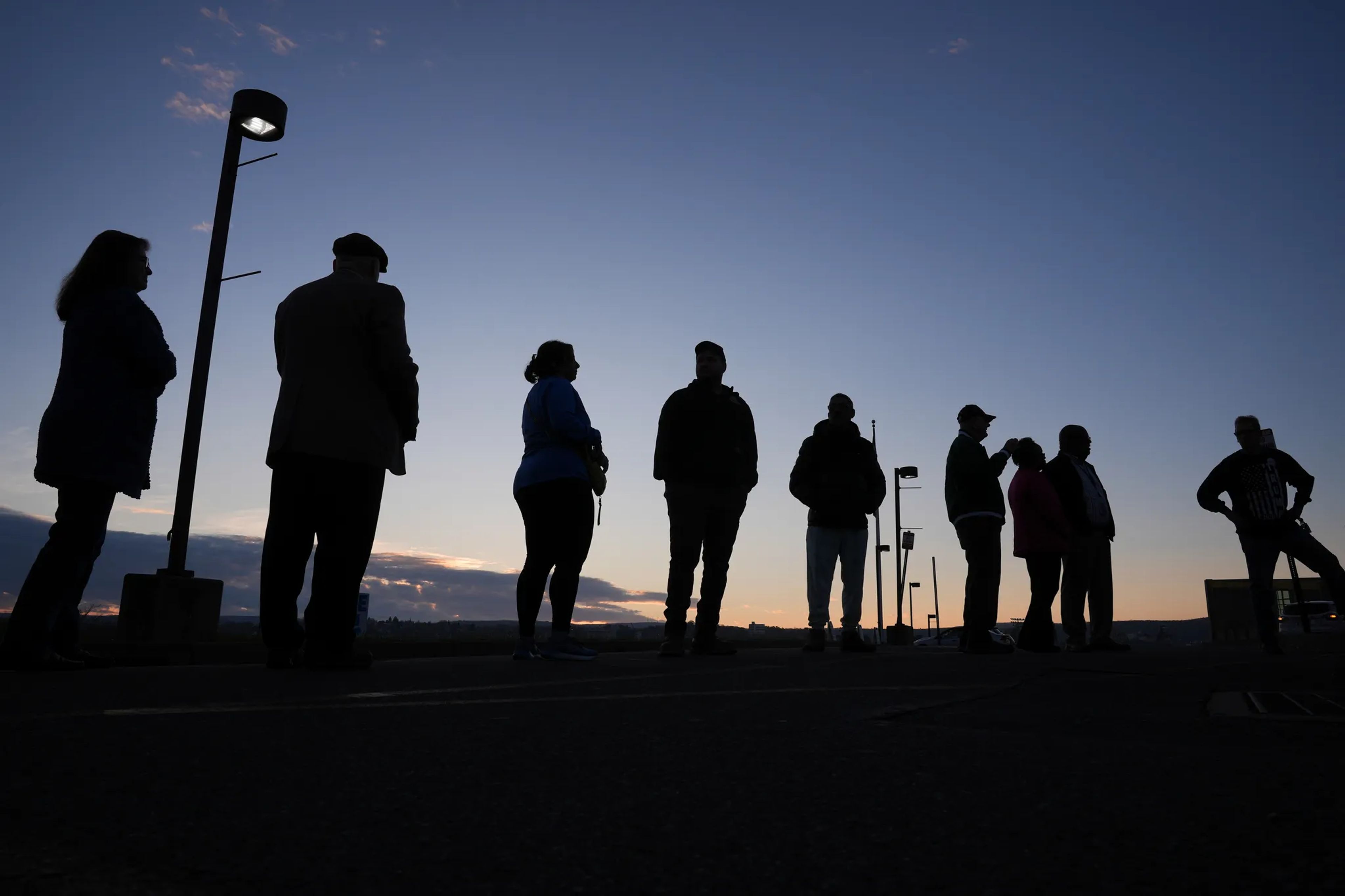Asian stock indexes reflect Dow rally in early trading
TOKYO -- Japanese and Korean benchmarks were recouping losses from the day before in early Wednesday trading, mirroring a similar "correction" rally on Wall Street. Japan's benchmark Nikkei 225 surged as soon as trading began, adding 3.2 percent to 22,307.60 after the first hour of trading. ...
TOKYO -- Japanese and Korean benchmarks were recouping losses from the day before in early Wednesday trading, mirroring a similar "correction" rally on Wall Street.
Japan's benchmark Nikkei 225 surged as soon as trading began, adding 3.2 percent to 22,307.60 after the first hour of trading. South Korea's Kospi also rose at its opening, and was trading up 0.3 percent at 2,460.82 in morning trading. Among the biggest losers Tuesday was the Nikkei 225, which had ended 4.7 percent lower. South Korea's Kospi had declined 1.5 percent.
U.S. stocks rallied Tuesday as a late surge helped them regain almost half their losses from the day before, when they had their biggest plunge in more than six years. The loss came at the end of a day of heavy trading and huge swings for the market.
Major indexes in Asia and Europe took steep losses and U.S. markets started sharply lower, only to repeatedly change direction. After its 1,175-point nosedive Monday, the Dow Jones industrial average lost 567 points right after trading began. After numerous turns higher and lower, it wound up with a gain, coincidentally, of 567.
Despite the turbulence, Tuesday's trading looked similar to the patterns shaping the market for the last year: Investors bought companies that do well when economic growth is strongest. Gainers included technology companies, retailers such as Amazon and Home Depot, and industrial companies and banks.
Bond yields turned higher after a sharp drop Monday. As a result, the biggest losses went to high-dividend companies, such as utility and real estate companies, which investors often buy as an alternative to bonds. When bond yields rise, those stocks become less appealing to investors seeking income. The yield on the 10-year Treasury note rose to 2.80 percent from 2.71 percent.
The Dow finished 567.02 points higher, or 2.3 percent, at 24,912.77.
The Standard & Poor's 500 index, a broader market barometer many index funds track, climbed 46.20 points, or 1.7 percent, to 2,695.14. The Nasdaq composite rose 148.36 points, or 2.1 percent, to 7,115.88.
The steep drops Friday and Monday wiped out the gains the Dow and S&P 500 made since the beginning of the year, but both remain higher over the past 12 months. The Dow is up 24 percent in the period, the S&P 500 18 percent.
Even after Tuesday's gain, the S&P 500 is still down 6.2 percent from the recent record high it set on January 26. That's less than the 10 percent known on Wall Street as a "correction."
Corrections are seen as entirely normal during bull markets, and even helpful in curbing excessive gains and allowing new investors to buy into the market at lower prices. It has been an uncommonly long time since the last market correction, which ended almost two years ago.
Brent Schutte, chief investment strategist at Northwestern Mutual Wealth Management, said the plunge wasn't caused by inflation fears alone. The markets have been unusually calm since late 2016, and he said investors were betting that would continue.
"People were positioned for more central bank easing or continued central bank easing, low rates, and importantly, low volatility," he said. "Corrections are caused by people having to reposition for new environments."
Investors remain fearful signs of rising inflation and higher interest rates could bring an end to the bull market sending stocks to record high after record high in recent years.
Friday's U.S. jobs report showed wages grew at a faster pace in January, and investors worried inflation is speeding up and the Federal Reserve will have to raise interest rates faster than previously expected in order to keep inflation in check. Higher rates act like a brake on the economy by slowing down borrowing and lending.
Schutte, of Northwestern Mutual, added corrections can end quickly, and they often do so when investors see evidence of continued economic growth. Experts do think the global economy will keep growing this year even though such growth is likely to bring more inflation. Schutte said as central banks stop propping up the market, trading will probably be more volatile in the next few years.
Travel bookings site TripAdvisor was one of only two S&P 500 companies that finished higher on Monday. On Tuesday it rallied another $5.22, or 14.7 percent, to $40.84.
U.S. crude oil added 48 cents to $63.87 a barrel Wednesday. It fell 76 cents, or 1.2 percent, to close at $63.39 a barrel in New York Tuesday. Brent crude, the benchmark for international oil prices, rose 39 cents to $67.25 a barrel in London.
In currencies, the dollar recovered to 109.41 yen Wednesday in Asia from 108.61 yen late Tuesday. The euro was trading at $1.2385.
In Europe, Germany's DAX fell 2.3 percent and the CAC 40 in France lost 2.3 percent Tuesday. The British FTSE 100 index fell 2.6 percent.
On Monday, the Dow finished down 4.6 percent while the S&P 500 sank 4.1 percent. The last fall of that size came in August 2011 when investors were fretting over Europe's debt crisis and the debt ceiling impasse in Washington prompting a U.S. credit rating downgrade.
Connect with the Southeast Missourian Newsroom:
For corrections to this story or other insights for the editor, click here. To submit a letter to the editor, click here. To learn about the Southeast Missourian’s AI Policy, click here.








